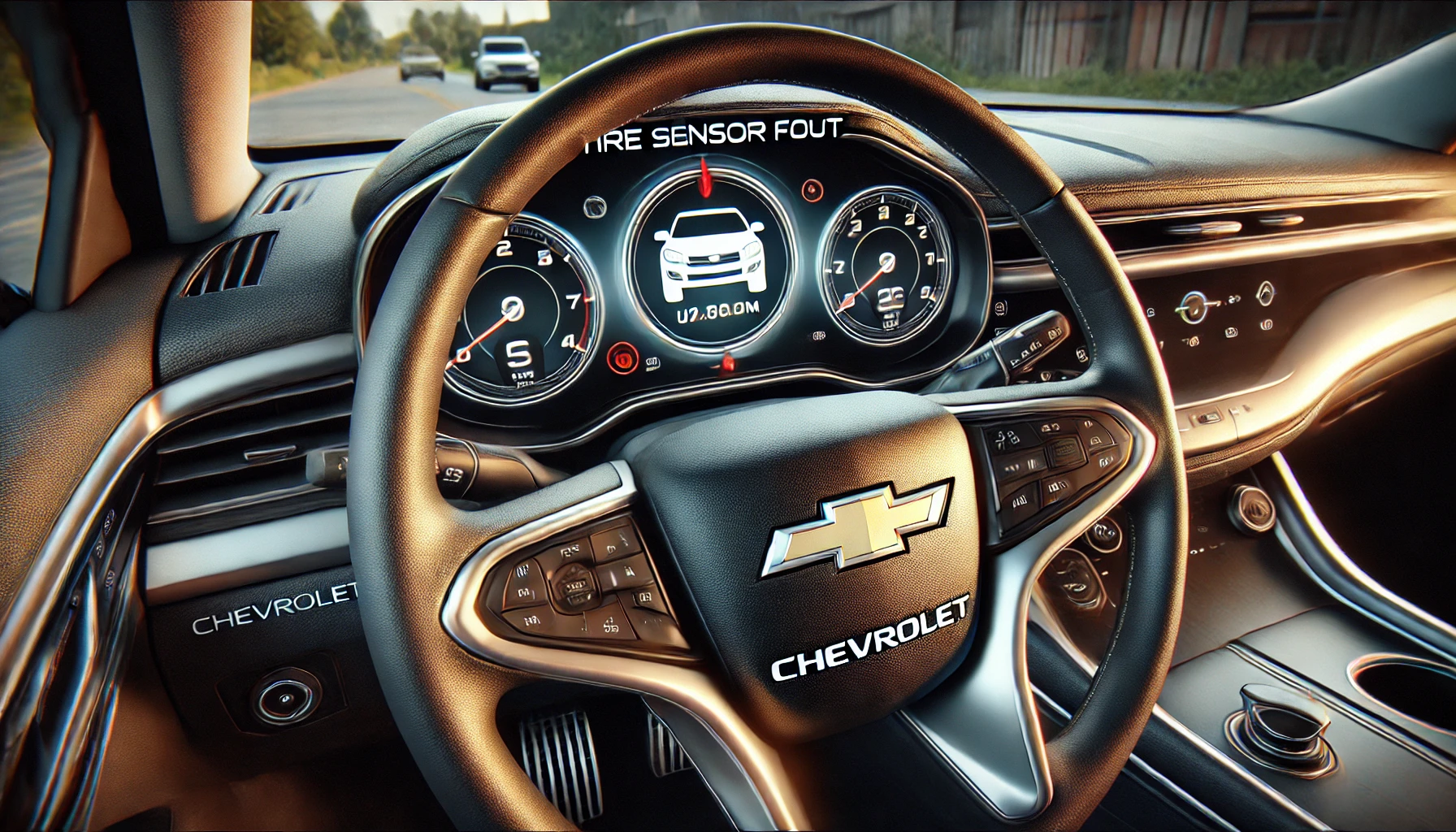
Chevrolet vehicles are equipped with a Tire Pressure Monitoring System (TPMS) designed to keep drivers safe by monitoring tire pressure levels in real time. When there is an issue with this system, the dashboard may display a “Tire Sensor Fault” warning. This can be caused by various issues, including sensor malfunction or incorrect tire pressure. While seeing this message can be unsettling, fixing it is generally straightforward. This guide will walk you through the potential causes and solutions for a Tire Sensor Fault in Chevrolet vehicles.
What Causes a Tire Sensor Fault in Chevrolet?
The Tire Pressure Monitoring System relies on sensors that transmit real-time pressure data to your vehicle’s onboard computer. A fault message can occur due to several reasons:
- Low Tire Pressure: The most common cause of a sensor fault is low tire pressure. If one or more tires are below the recommended level, the TPMS may trigger a warning.
- Sensor Battery Failure: Each tire sensor contains a battery, which can wear out over time. If a sensor’s battery dies, it will no longer be able to send data, causing the system to display a fault.
- Sensor Damage: Physical damage to the sensors, often during tire changes or from rough road conditions, can result in inaccurate readings or loss of communication with the vehicle’s system.
- Radio Frequency Interference: Interference from other electronic devices or a software glitch in the vehicle’s TPMS system can also cause a Tire Sensor Fault.
- Environmental Factors: Cold weather can cause the air inside the tires to contract, which might trigger the TPMS warning due to a sudden drop in tire pressure.
Steps to Fix Tire Sensor Fault in Chevrolet
Here’s how you can troubleshoot and fix a Tire Sensor Fault in your Chevrolet vehicle:
1. Check Tire Pressure Manually
The first step when you see a tire sensor fault is to manually check the tire pressure in all four tires using a tire pressure gauge. You’ll find the recommended tire pressure levels in your vehicle’s owner manual or on a label located inside the driver’s door.
If you find that any tires are under-inflated, inflate them to the recommended level. Once you’ve done this, drive the car for a few miles to allow the system to recalibrate. In many cases, correcting the tire pressure will clear the fault.
2. Reset the TPMS System
If adjusting the tire pressure doesn’t resolve the issue, you might need to reset the TPMS system manually. Here’s how to do it in most Chevrolet vehicles:
- Turn the vehicle to the On position without starting the engine.
- Navigate through the Driver Information Center (DIC) using the controls on the steering wheel.
- Find the Tire Pressure Menu and select the option to Relearn Tire Positions or Reset TPMS.
- Follow the on-screen instructions, which typically involve driving the vehicle at a moderate speed for 10 to 15 minutes to allow the system to recalibrate the sensors.
If successful, the warning message should disappear.
3. Inspect the Sensors for Physical Damage
If resetting the system doesn’t work, inspect the sensors themselves. Chevrolet tire sensors are located inside the tire, attached to the valve stem. If any tires were recently changed or rotated, there’s a chance the sensor was damaged during the process.
If you suspect a damaged sensor, it will need to be replaced. Replacing a tire sensor is best left to professionals, so it’s recommended to visit a Chevrolet dealership or a trusted mechanic.
4. Replace the Sensor Battery
As mentioned earlier, tire sensors rely on batteries to function. These batteries typically last 5 to 10 years but can die sooner depending on usage. Unfortunately, the batteries inside the tire sensors are not easily replaceable on their own, so the entire sensor may need to be replaced.
A qualified mechanic or Chevrolet service center can replace the sensor for you.
5. Update Your Vehicle’s Software
If none of the above solutions work, the issue might be due to a software glitch in your vehicle’s TPMS system. Chevrolet regularly releases software updates that may fix bugs and improve system reliability.
Visit your local Chevrolet dealer to check if your vehicle’s software is up to date. If an update is available, they can install it and potentially resolve the tire sensor fault.
How to Prevent Future Tire Sensor Faults
- Regularly Check Tire Pressure: Make it a habit to check your tire pressure at least once a month, especially during seasonal temperature changes when pressure levels can fluctuate.
- Routine Maintenance: Have your TPMS sensors checked during regular vehicle maintenance to ensure they’re in good working order.
- Avoid Rough Terrain: Driving over harsh or uneven surfaces can damage the sensors. Be mindful of road conditions to protect both your tires and sensors.
- Keep Software Updated: Regularly updating your vehicle’s software ensures that your car’s electronic systems, including the TPMS, function properly.
Conclusion
While a Tire Sensor Fault in a Chevrolet vehicle can be alarming, it’s often a simple issue to fix. By checking your tire pressure, resetting the TPMS system, and addressing any sensor damage or battery issues, you can quickly resolve the problem and get back on the road safely. If the fault persists, a visit to a Chevrolet-certified service center will ensure professional diagnosis and repair.
